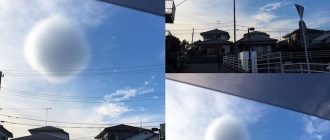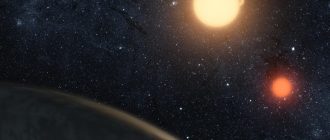

Analysis of images of the Dawn space probe, studying the dwarf planet Ceres, as well as modeling the likely path of the development of ice rocks of cryovolcanoes, led scientists to unexpected conclusions. It turned out that a recently discovered lone ice volcano on the surface of Ceres may have hidden 'older brothers' and 'sisters' who disappeared from its surface millions of years ago.
The Dawn spacecraft discovered the 4-kilometer-high Akhuna Mons cryovolcano on Ceres in 2015. Other ice worlds in our solar system, such as Pluto, Europa, Triton, Charon, and Titan, may also have cryovolcanoes, but Ahuna Mons was considered the only one of its kind on Ceres, and this was considered strange given that the dwarf planet is in orbit between Mars and Jupiter and is located much closer to the Sun than other planetary bodies where cryovolcanoes were discovered. Today Akhuna Mons is a prominent feature on Ceres, about half the height of Mount Everest.
New research suggests that in the past, millions or billions of years ago, other ice volcanoes existed on the dwarf planet, which simply subsided over time and became indistinguishable from the planet's surface. A detailed description of these processes was published in the article Geophysical Research Letters, journal of the American Geophysical Union.
“Imagine if there was only one volcano in the entire Earth,” said Michael Sori of the Moon and Planets Laboratory at the University of Arizona. “That would confuse you.”
According to Sori, the steep slopes of the cryovolcano and its well-defined boundaries add additional intrigue, which may indicate the geological youth of Akhun Mons. The study reports that this could have happened in two cases: Ahuna Mons, in an incomprehensible way, formed alone relatively recently, and in a rather inactive world. Or, on Ceres, some process is taking place that destroyed the cryovolcanoes existing on the surface, but left the 'young' Akhuna Mons.
Ceres has no atmosphere, so there are no processes on it that wear out volcanoes on Earth – wind and rain. Sori and his colleagues suggested that in this way another process, the so-called viscous relaxation, may be affected, which is responsible for the destruction of other volcanoes. The theory of viscous relaxation implies that almost any solid object will flow over time. For example, a frozen block of honey will remain solid, but over an impressive amount of time, it will still spread until it is equal to the original structure.
Sources: heritagedaily






